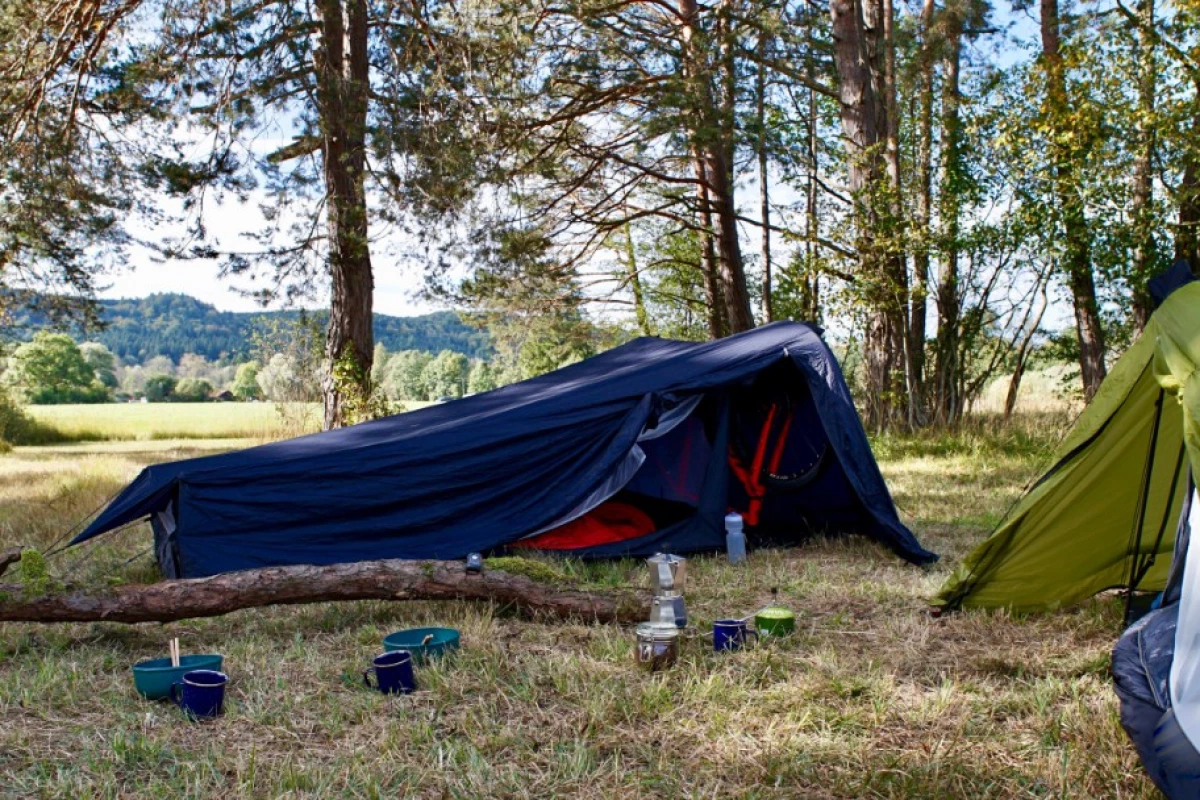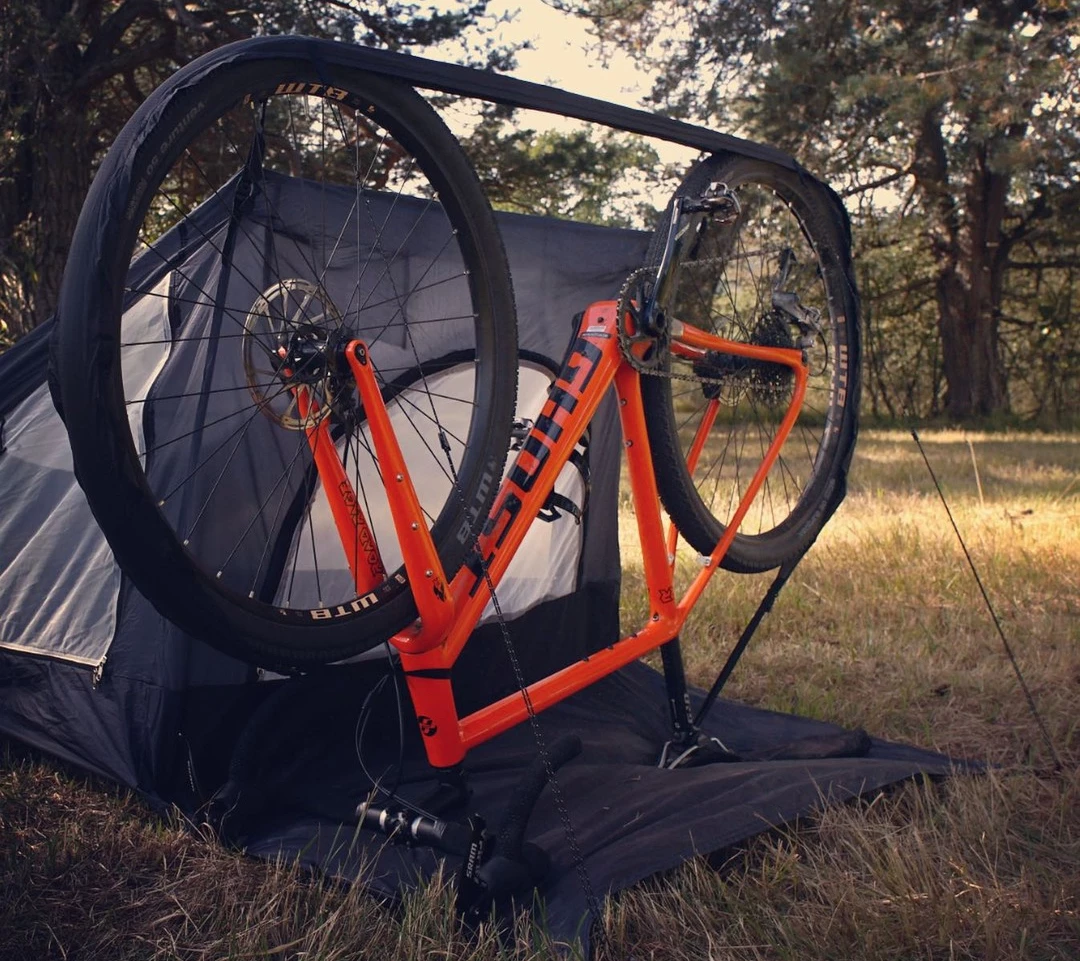Many "bikepackers" (aka bicycle campers) don't like leaving their trusty steed outside overnight, where it could get stolen or rained on. The Moruta Hogar 2P tent offers a solution, as it incorporates the user's bike into the tent's frame.
The German-designed Mortura can be packed into a handlebar bag when not in use, and reportedly tips the scales at just 1.6 kg (3.5 lb). It's made of three types of ripstop nylon: 40D (denier) polyurethane-coated for the ground sheet, 20D silicone/polyurethane-coated for the flysheet, and 20D breathable water-resistant for the inner tent.
Users start by laying the joined ground sheet and inner tent flat on the ground, staking the ground sheet down, then placing their bike upside-down at one end of the ground sheet, adjacent to the head end of the inner tent. They then run a nylon connector strip from the bike's saddle, up over its tires, and back down to the handlebars. A couple of cords run from that strip to pegs in the ground, to help keep the bike from tipping over.

Next, the previously flat head end of the inner tent is pulled up and fastened to the connector strip, raising the tent's roof to the height of the bike. After the foot end of the inner tent is staked down, the flysheet is thrown over both the inner tent and the bike, then also staked down. The final result is a structure with the inner tent at one end, a covered storage area at the other end, and the bike between the two.
Users subsequently enter and exit the inner tent through a zippered flap in the side of it and the flysheet. The storage area can be accessed from outside via another flap in the flysheet, or from inside via a flap in the bike-end of the inner tent.
And it should be noted that the tent can be set up without a bike, using either hiking poles or an included set of aluminum tent poles instead.

Should you be interested, the Moruta Hogar 2P tent is currently the subject of a Kickstarter campaign. Assuming it reaches production, you can get one for a pledge of €299 (about US$301) – that's 25 percent off the planned retail price. The setup process is demonstrated in the video below.
Topeak's Bikamper, which took a different approach to integrating a bike into a tent, appears to no longer be in production.
Sources: Kickstarter, Moruta





